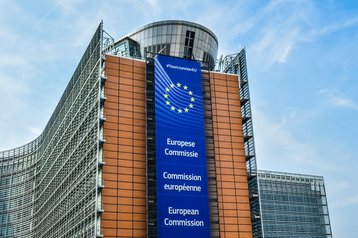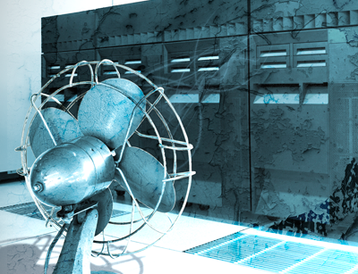Pressure is building on the data center industry in Europe, and it is arriving in the form of standards and regulations.
With the EU either proposing, discussing, or introducing a plethora of regulations that will have either a direct or indirect impact on the data center industry, it is more important than ever that for the industry to discussing how to address them - as an industry and not as individual companies.
The coming regulations are primarily sustainability-focused, but they are coming from all angles.
There is the Corporate Social Responsibility Directive (CSRD), which will require companies to report on the environment-related risks they face.
According to the directive, this will include ‘reporting on social and environmental factors with a view to identifying sustainability risks and increasing investor and consumer trust.’ The directive also prompts companies to report on diversity, and ‘social and employee-related matters, respect for human rights, anti-corruption, and bribery matters,’ among others.
Beyond this, there is also the EU sustainability taxonomy that came into force in 2020, ranking investments based on six different objectives: climate change mitigation, climate change adaptation, the circular economy, pollution, the effect on water, and biodiversity.
By embedding environmental impacts into financial reporting, these regulations effectively require data center providers to investigate their environmental impact from their customers’ perspective.
At the same time, several other new regulations are impacting them more directly: through energy efficiency.
Green Deal
With its Green Deal proposal in 2020, the EU raised its ambition on reducing greenhouse gas emissions to at least 55 percent below 1990 levels by 2030, as a way to transition the continent to new sustainable economics.
In this setting, the 2021 EU Energy Efficiency Directive (EED) is no surprise. The directive sets energy efficiency targets for multiple sectors - and addresses the data center industry by name, removing any ambiguity.
“Another important sector to which increasing attention is being paid is the information and communications technology (ICT) sector, which is responsible for five to nine percent of the world's total electricity use and more than two percent of all emissions,” says the Directive.
“In 2018, the energy consumption of data centers in the Union was 76.8TWh. This is expected to rise to 98.5TWh by 2030, a 28 percent increase. This increase in absolute terms can as well be seen in relative terms: within the EU, data centers accounted for 2.7 percent of electricity demand in 2018 and will reach 3.21 percent by 2030, if development continues on the current trajectory.”
In other words, the pressure is no longer just building, it is well and truly on.
“I think about 10 years ago, we started to see the Environment Agency in the UK suddenly ask, ‘data centers… are they supposed to have permits?” said Leigh Lloyd, sustainability director at Yondr Group, during a DCD panel.
“There is now a tsunami of regulation coming at all industries because it's not just data centers. It goes beyond environmental data and into diversity and gender and social value,” said Lloyd.
For her, the key factor is measurement: “It's all about metrics, and I think that is going to be the thing that we need to pull together on and try to help each other understand what the best metrics are so that we can all be reporting on a level playing field.”
In the past, data centers escaped the attention of regulators, but that time is over.
There is a danger of confusion, however, in the sudden abundance of regulations. Without a set way of collating and measuring the data, operators could see several data requests for the same information but in different forms.
The sheer workload this will create for data centers, ironically, isn’t very sustainable.
Agreeing on metrics
But agreeing on metrics is easier said than done. We are all familiar with PUE and WUE, for measuring how efficiently data centers use power and water, but these measurements just aren’t cutting it anymore.
Marc Garner, SVP for the Secure Power Division at Schneider Electric, told DCD that he is hopeful, but he doesn’t think the metrics are there yet.
“It feels like we’re a way off from [agreeing on metrics] at the moment - because there are so many different inputs and so many different ways of measuring energy,” he said.
He wants to bring the industry together to get a broad industry consensus and understand the challenge of the topic of measurement: “There are probably four or five different measurements, things like PUE, which will feed into overall measurements from an industry perspective. But [PUE] shouldn't be the only one, or the only one that we talk about.”
The geographical and climatic diversity of the EU is also an important issue when it comes to agreeing upon sustainability metrics. From the south coast of Greece to the top edge of Norway, with vastly different temperatures, rainfall, and other natural features, there are no one-size fits all sustainability approaches that can be used continent-wide.
This is an issue that Michael Winterson, managing director at Equinix touched on during the same DCD sustainability regulation panel.
“We use water to cool our data centers,” said Winterson, “because in many of the countries we operate in, we're not allowed to use chlorofluorocarbons and other forms of greenhouse gases in our cooling systems. So we use evaporative cooling. It's cheap, it's massively efficient, and it's helped us reduce our PUE. Now all of a sudden we're seeing press articles about the amount of water we're consuming as an industry.
“We've got to start looking contextually. There are some cities where we are water constrained, and we're going to have to move back away from evaporative cooling towards some other technology. But this might not be relevant in Norway.”
Without this context, we risk not only delaying meeting sustainability goals, but also contributing to the very PR crisis that this issue is causing. Data centers are widely seen as a succubus upon the climate and the grid - and this is an image the EU agrees with.
Fighting or co-operating
Winterson broke down the issue: “Contextually, think about tobacco versus alcohol. Every one of us immediately sees that tobacco equals death, and alcohol equals fun. In reality, both of them are perfectly legal drug delivery mechanisms.
“Which industry is suffering under horrible regulations? And which industry is regulated, but doing well with regulations? Do you want to be the tobacco industry? Because that's where we're going today. Our failure to communicate is going to take us straight down the tobacco route. We will be the pariah of the technology industry, even though we don't deserve it. We are the support. We're the foundation of the industry, but we're fast going down this route.”
This is where opacity has long been harming the industry, and regulated reporting could at the very least enable the data center industry to show the progress it is making toward sustainability.
The industry must deal with the regulation issue and work its way through it. But until there is an agreement on a set of metrics, it is unlikely that this problem is going to untangle itself any time soon.
So, when are we going to have a mafia-style sit-down, and make a decision? It had better be sooner than later.


